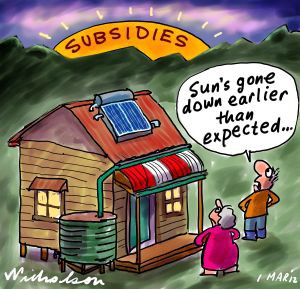Are we warming to wind?
Renewable Energy 23rd November 2015
Renewables, particularly wind and solar feature prominently as part of the UK’s future energy mix. Energy independence from unstable international prices and political independence in terms of secure imports, providing economic growth and the creation of jobs are some of the driving factors. With subsidies, many companies jumped at the opportunity as a viable commercial and profitable venture.

In less than ten years, wind energy’s contribution to the UK electricity needs has grown from less than 1% to 10% with 13,313 MW generating capacity, according to Renewable UK, making wind energy the UK’s single biggest source of renewable power, hallmarked by a £1.25bn investment in 2014-15.
But the sector has continued to face a series of challenges, one being a policy to halt new onshore wind farms. Another being their intermittency. Wind turbines for example will require back-up gas plants when there is insufficient wind blowing. They take up a lot of land or sea space and are visually intrusive. PV cells are optimised by having constant sunlight but efficiencies of 10-30% are a significant drawback. There are worldwide intensive research efforts to improve and optimise these parameters but there is a long way to go.
Looking forward, wind energy is now at a cross roads. Difficult choices face the sector with uncertain policies. A balancing act of the concrete decisions on nuclear power is likely to formulate which direction wind energy blows. However, as fossil fuels are reduced, covering the need to cover the shortfall in energy supply will continue to increase in the coming years and decades, and if we want to meet this demand, wind energy will need to play a continuing role in the UK’s energy mix.
Dilwar Hussain is a Ph.D. student at The University Of Sheffield


It should be noted that slightly more than 13 GW of nameplate wind capacity means that unless there is 13 GW of gas turbine capacity to back it up when the wind exceeds about 25 mph and they are at full production. The 10% of UK electrical consumption that is claimed by Renewable UK to have been provided, was not something upon which the grid managers could depend. If a wind turbine farm is in a place where the wind is favourable enough to give a “production factor” of 34%, it does not by any means imply that you can expect at any time as much as 34 MW from your 100 MW wind farm. If the wind provides full rated power at 25 mph and more, (the turbine blades “feather” for higher wind speeds, like a sailing ship reefing its sails) then at 20 mph it provides, not 80% of its rated capacity, but 80% cubed. That’s 64/125, or 51.2%
So if you’re counting upon 13 GW from all those wind “turbine” devices, more than two thirds of it is coming from GAS turbines. That’s because if you’re receiving 13 GW from wind, you’d better have quite a lot of gas turbine power ready to take over, already spinning.
When the wind drops, you can’t wait for another generator to come up to speed. The voltage in Britain goes from positive maximum to negative maximum in a hundredth of a second. Overloaded generators slow down, but not all at the same rate, so they get out of step.